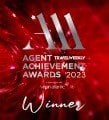We’ll find you the best deal on the right cruise. Our cruise specialists are here to help plan your dream cruise holiday.
Want to combine this with a hotel stay or land tour? No problem, call us today and we’ll build a tailor made holiday just for you!






